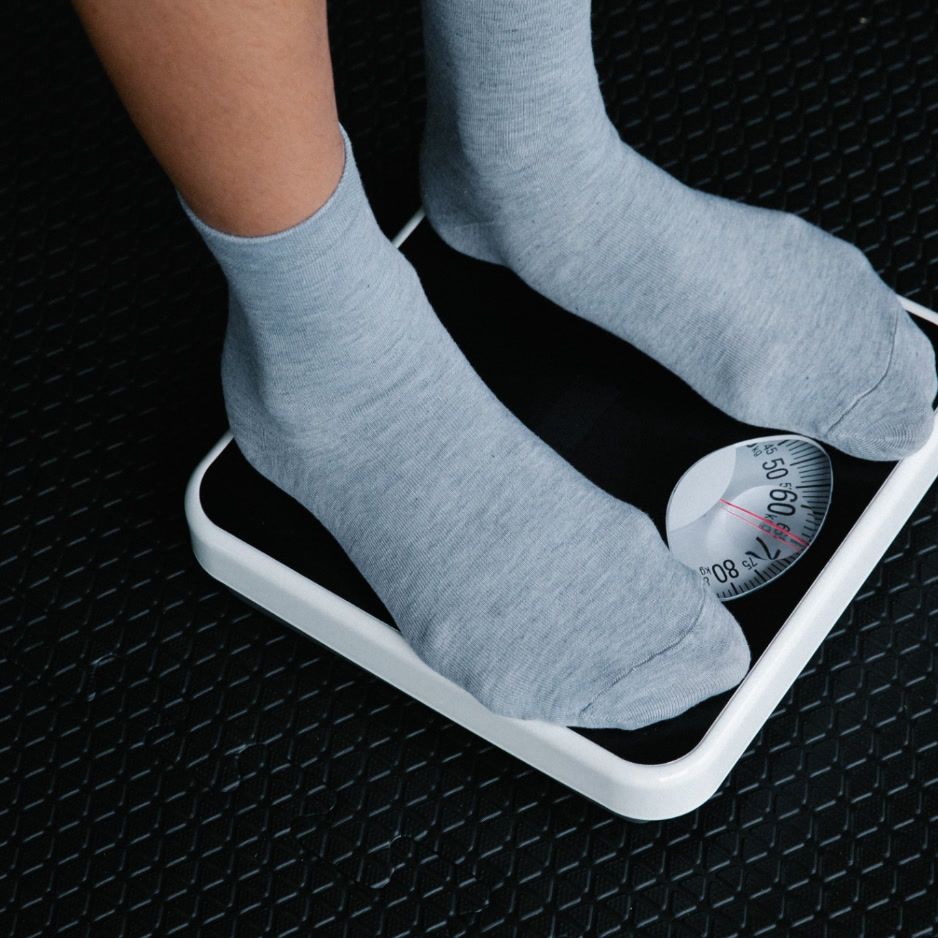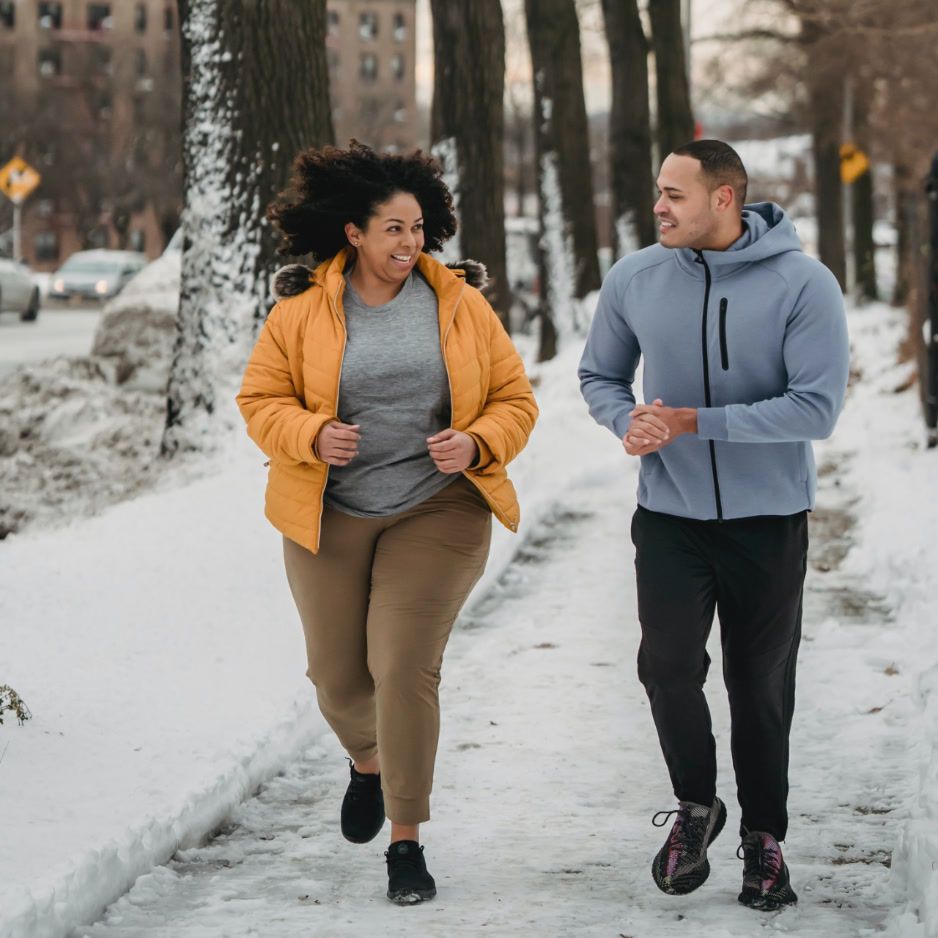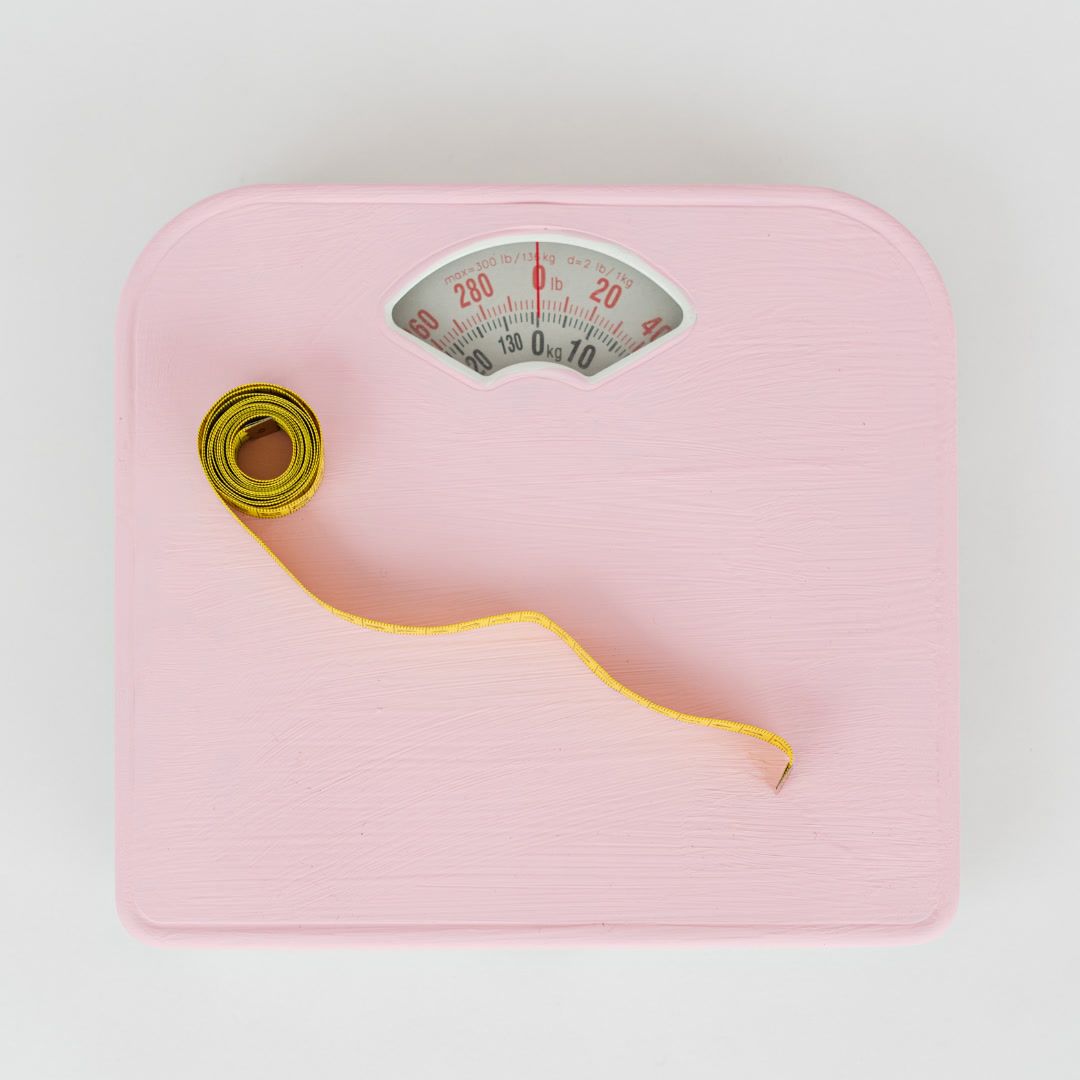How to Fix Anterior Pelvic Tilt (Test & 10-Minute Plan)
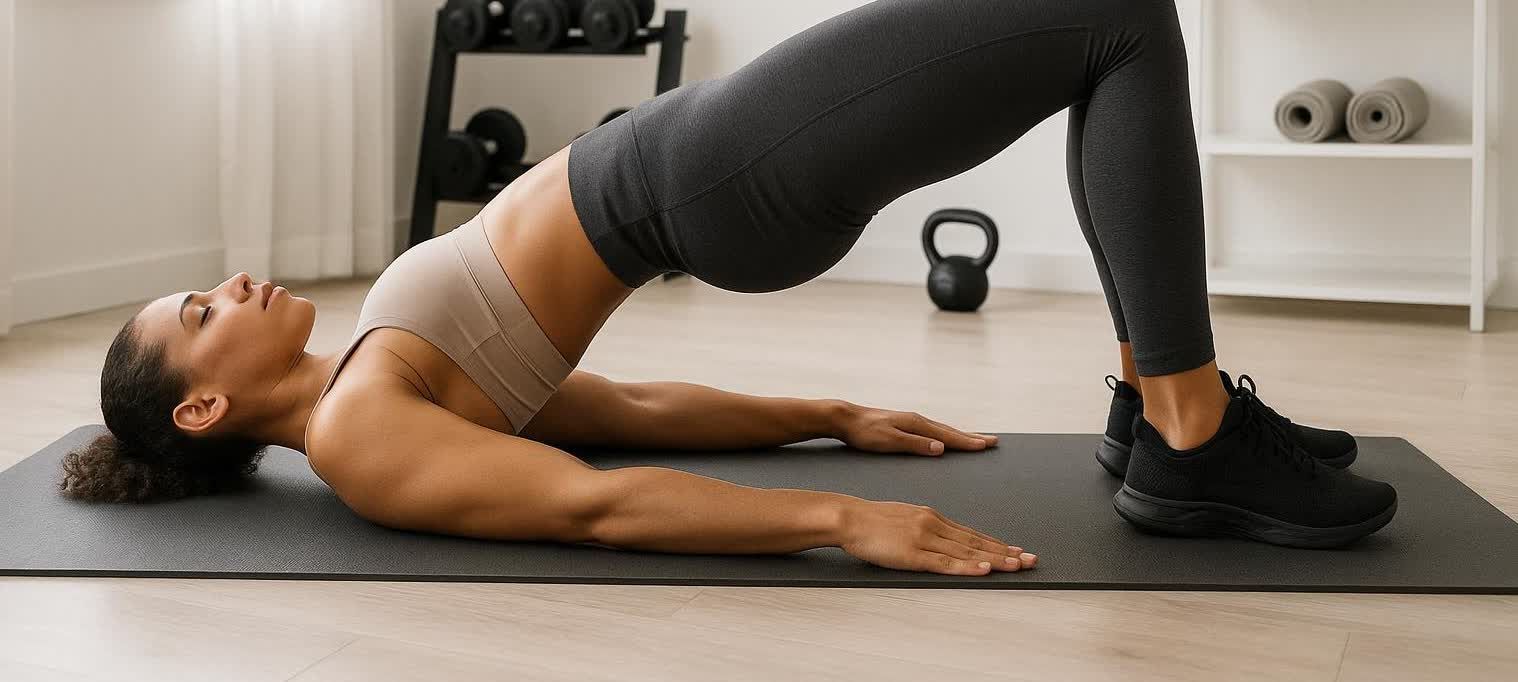
How to Fix Anterior Pelvic Tilt (Test & 10-Min Plan)
Notice a pronounced curve in your lower back and your hips tipping forward in photos or the mirror? You might be dealing with anterior pelvic tilt (APT). The good news: many people see posture and comfort improvements with the right blend of stretches, strength drills, and lifestyle tweaks practiced consistently for several weeks.
This guide walks you through:
- A two-minute at-home test to see if you might have APT
- Why sitting, shoes, and even breathing patterns matter
- A 10-minute corrective routine that balances stretch vs. strengthen
- How to track progress with photos and a BodySpec DEXA scan
Quick Refresher: What Is Anterior Pelvic Tilt?
Your pelvis works like a bowl. Tip it too far forward and water (aka your internal alignment) spills out. As explained by health resources like Medical News Today, in APT, tight hip flexors and lower-back muscles pull the front rim of the bowl downward, while weak glutes and core fail to hold the back rim level.
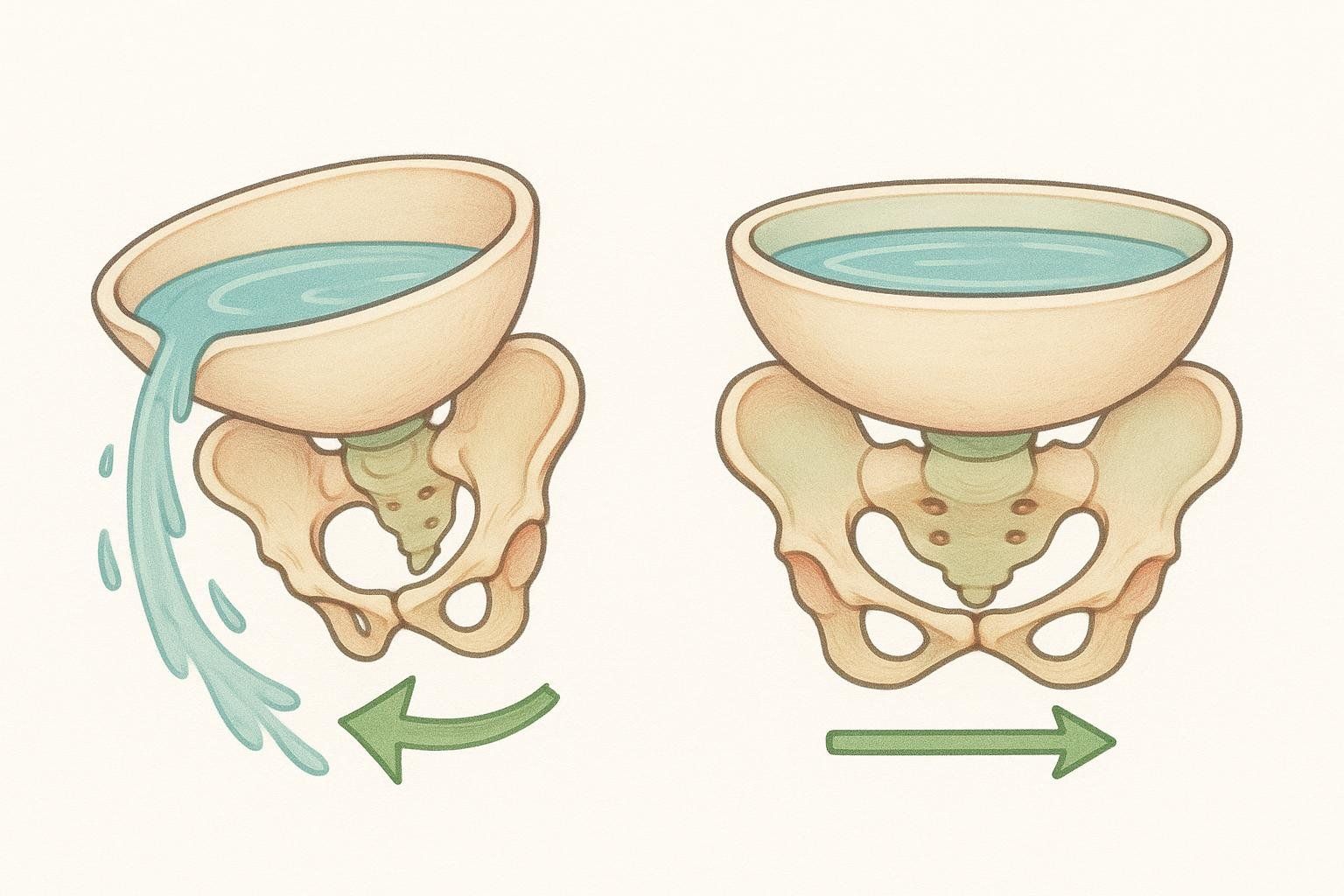
Common Red Flags
- Exaggerated lower-back arch
- Protruding abdomen or buttocks even at rest
- Nagging low-back or hip-flexor tightness after long sitting spells
Many adults naturally sit in some degree of anterior tilt, but larger angles are linked to back pain and decreased athletic performance, as noted by sources like Healthline.
Step 1: Do You Actually Have APT? Try the Thomas Test
- Lie on the edge of a sturdy table or couch.
- Pull one knee to your chest; let the other leg hang.
- Snap a side-view photo or use a mirror.
| Sign | What It Means |
|---|---|
| Hanging thigh can’t drop below table | Tight hip flexors |
| Knee straightens instead of staying bent 90° | Tight quads |
| Lower back lifts off the surface | Over-arching of the lower back |
If you observe two or more of these signs, you likely have a meaningful APT and will benefit from the routine below—guidance that aligns with resources like Physio-Pedia on the Thomas Test.
Tip: Want objective numbers? A BodySpec DEXA scan provides high-resolution images and regional muscle data that can highlight left-right imbalances around your hips and core, offering a clear baseline to improve upon.
Step 2: The 10-Minute Daily Correction Circuit
Do this sequence 5–6 days per week for four weeks, then reassess.
1. Half-Kneeling Hip Flexor Stretch – 60 seconds per side
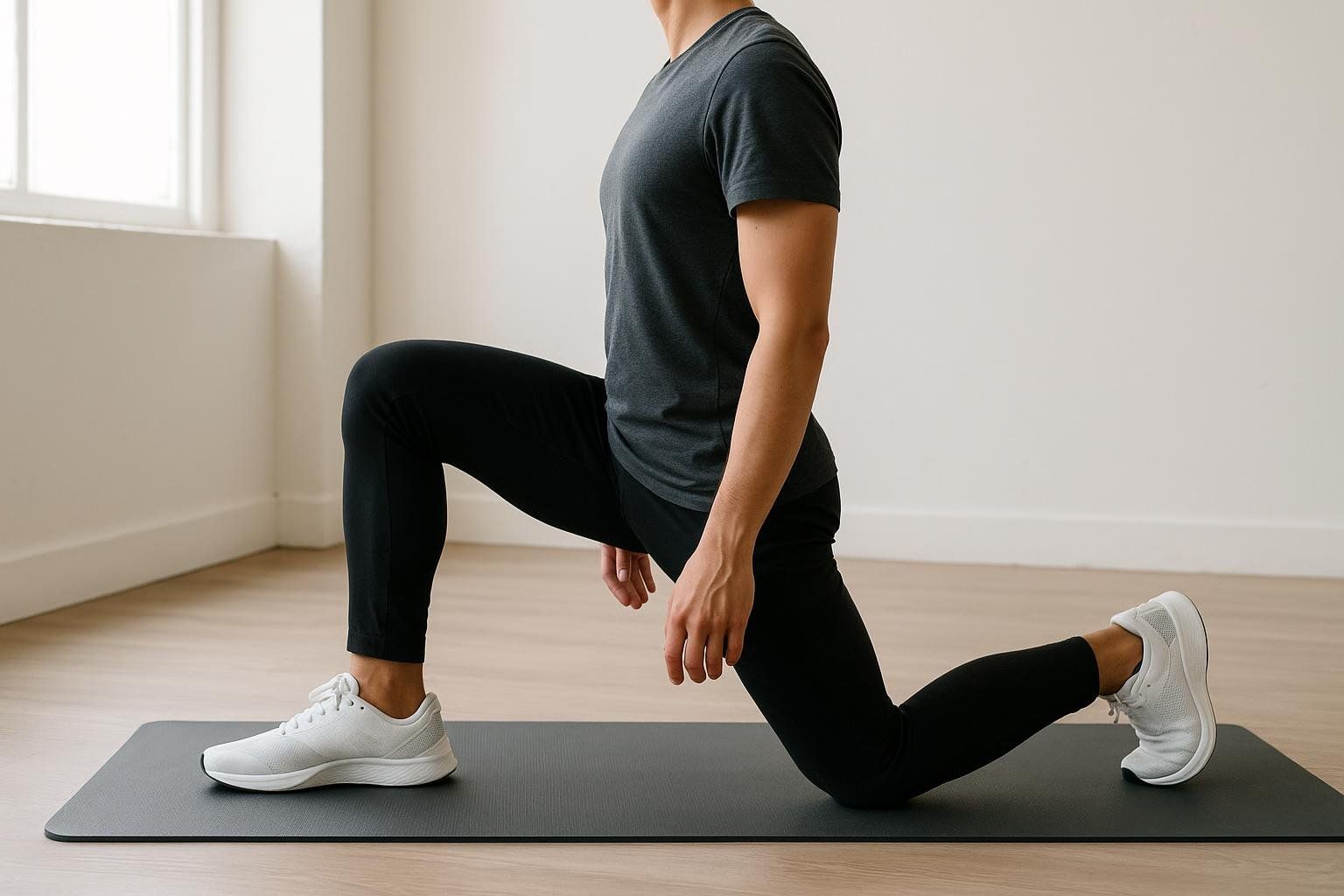
- Kneel with right knee down, left foot forward.
- Tuck pelvis (think “zip up your fly and squeeze the right glute”).
- Glide hips forward until you feel a stretch in the right front hip.
2. 90/90 Breathing Reset – 60 seconds
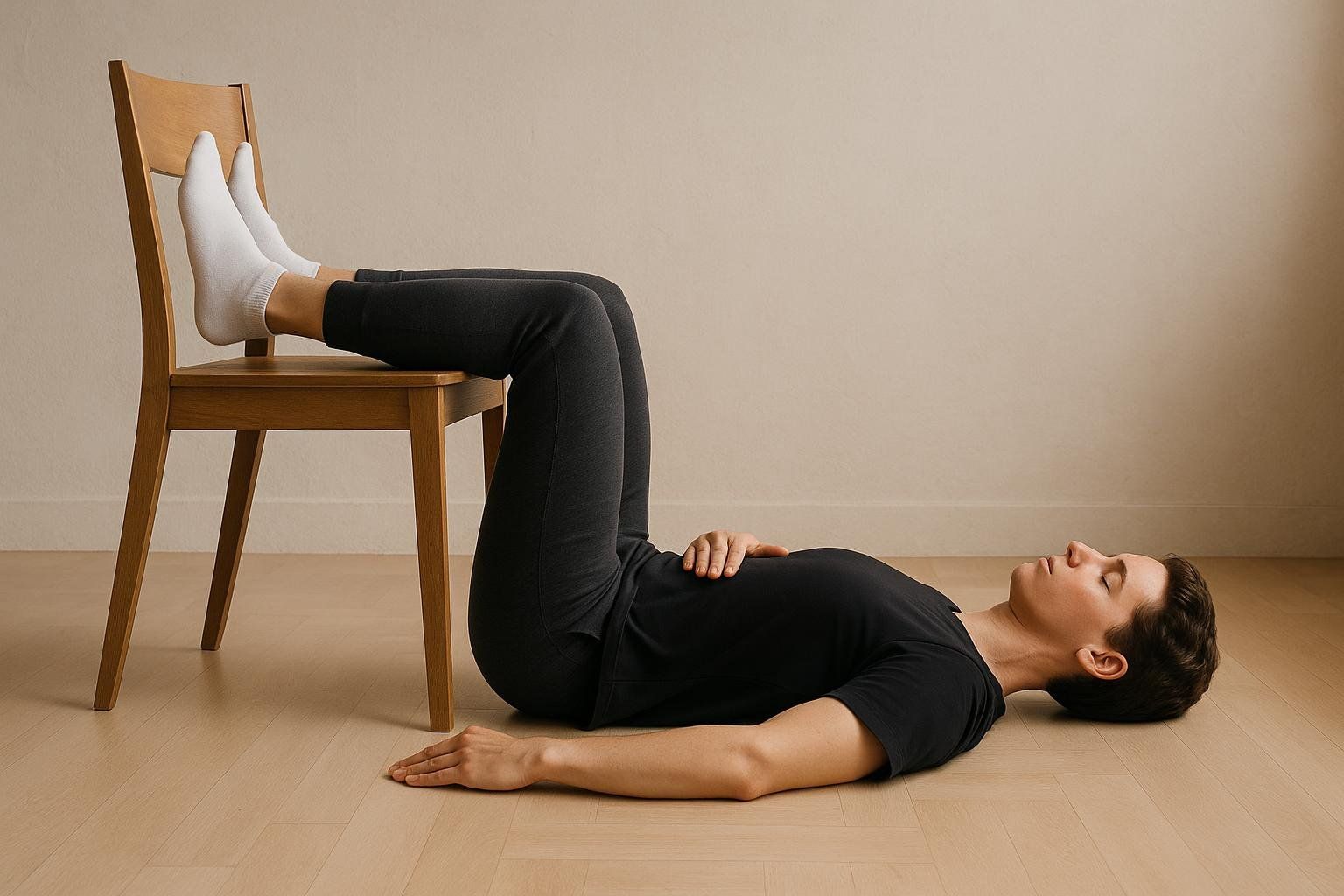
- Lie on your back, hips and knees at 90° on a chair.
- Exhale fully through the mouth, flattening ribs.
- Inhale through the nose, feeling low ribs expand laterally.
- Better diaphragmatic control reduces compensatory low-back arch.
3. Glute Bridge with March – 10–12 total marches (5–6 per side)
- Lift your hips into a bridge and hold this position.
- While keeping your hips steady, march by lifting one knee at a time toward your chest.
4. Side-Lying Clamshell – 15 reps per side
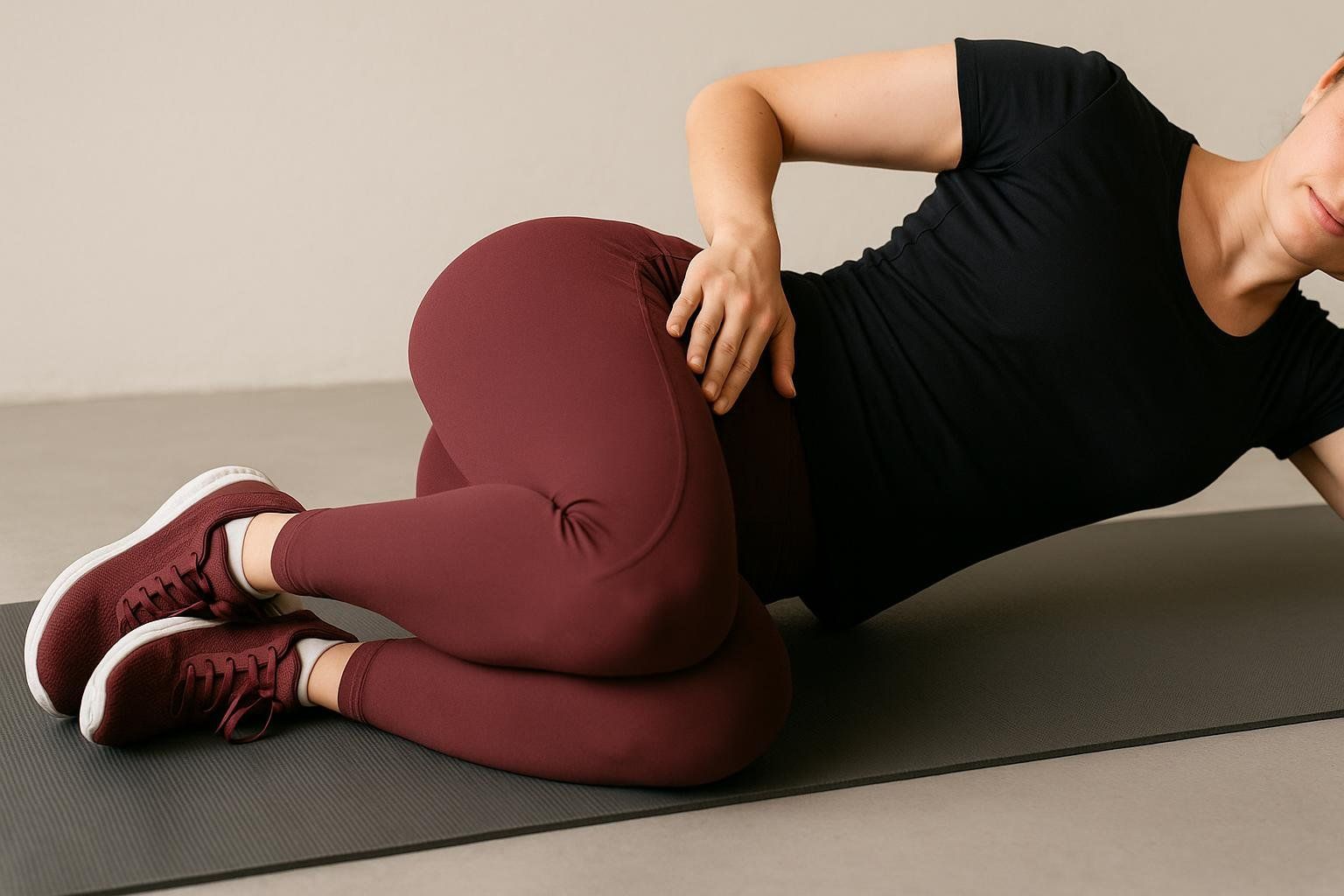
- Lie on your side, knees bent 45°, heels in line with hips.
- Keeping feet together and core braced, raise the top knee until you feel the glute engage, then lower with control.
5. Posterior Pelvic Tilt Crunch – 15 reps
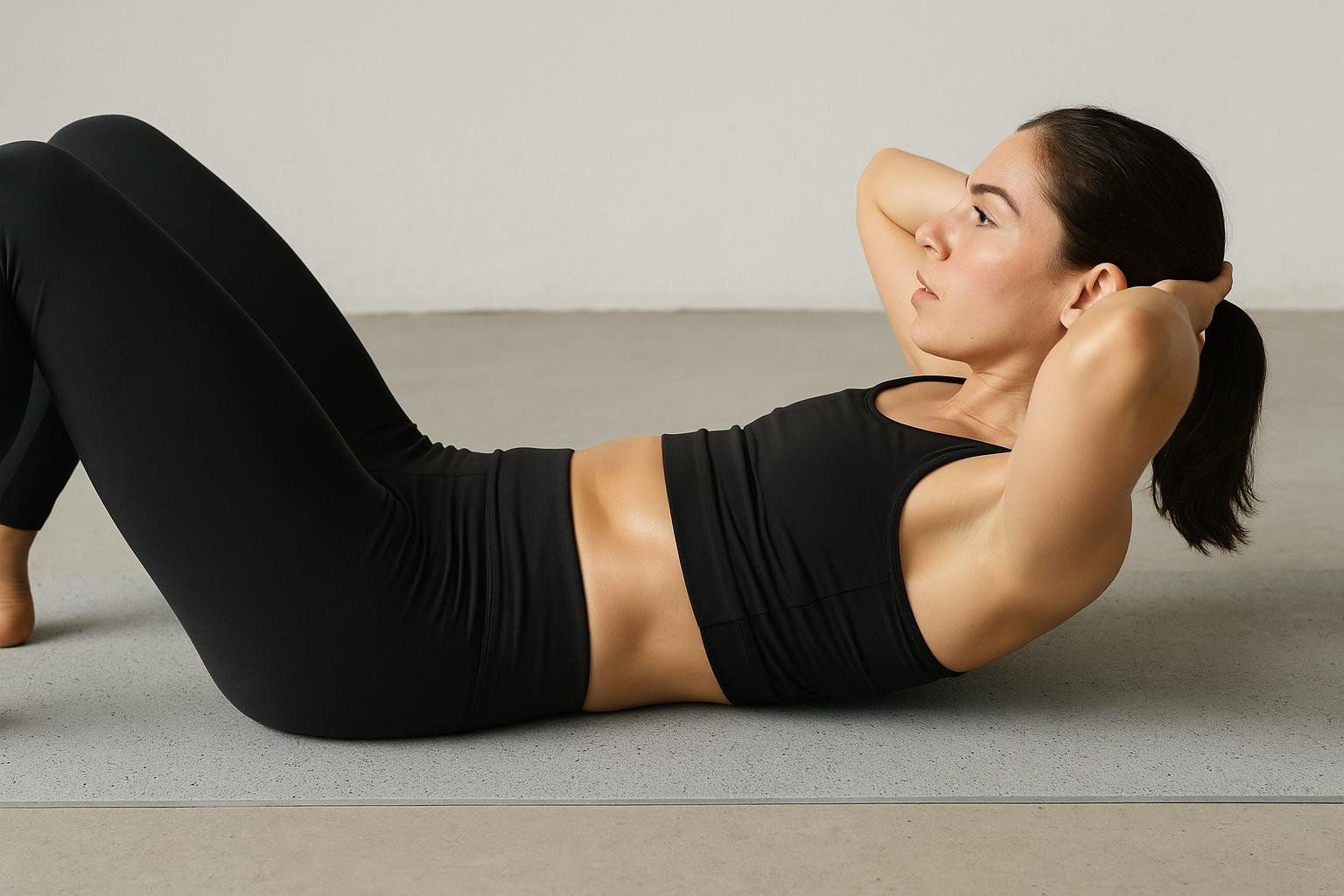
- Lie on your back with knees bent and feet flat.
- Flatten your lower back into the floor (posteriorly tilting the pelvis) before curling the shoulders a few inches off the ground; return slowly.
6. Body-Weight Squat with Mini-Pause – 12 reps
- Stand shoulder-width apart, toes slightly out, core braced.
- Sit hips back until thighs are parallel to the floor, pause one second while keeping ribs stacked over pelvis, then drive through your full foot to stand tall.
Total time: about 10 minutes including transitions.
Level-Up: Progress body-weight squats to a weighted version (like goblet squats) and add barbell hip thrusts or Romanian deadlifts on training days to super-charge posterior-chain strength.
Step 3: Lifestyle Tweaks That Turbo-Charge Results
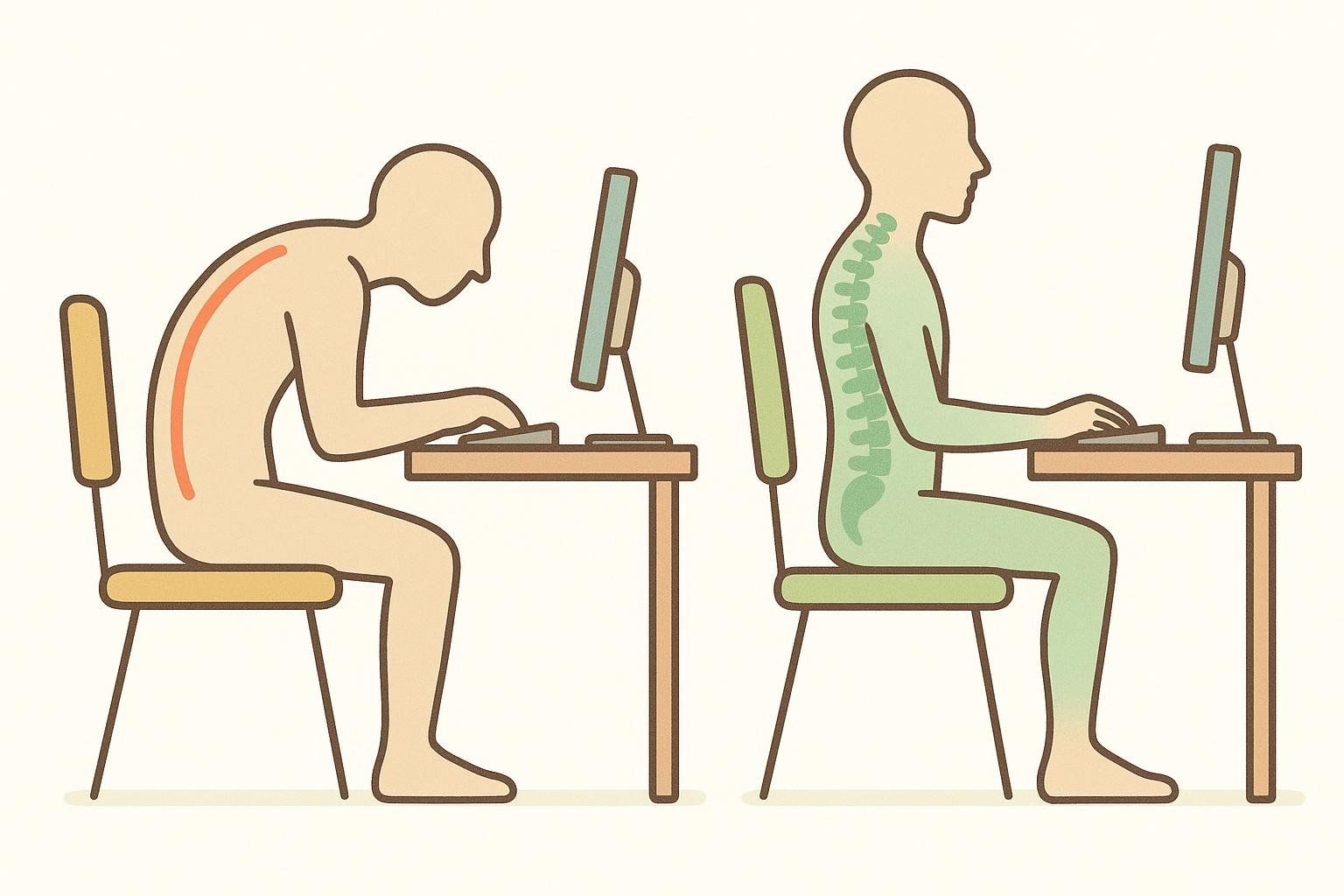
| Habit | Why It Helps | Quick Fix |
|---|---|---|
| Prolonged sitting | Keeps hip flexors shortened | Set a 30-minute stand-up timer or try a sit-stand desk |
| High heels > 2 inches | Pitches pelvis forward | Commute in flats; save heels for meetings |
| Shallow chest breathing | Ribs flare, exaggerating lumbar curve | Practice the 90/90 drill twice a day |
| Flat feet | Chain reaction up to pelvis | Foot-strengthening drills and shoes with good arch support |
How Long Does It Take to Fix Anterior Pelvic Tilt?
Most individuals notice encouraging changes within 4–8 weeks of consistent practice. Severe cases or postpartum recovery may take longer.
Track your own curve: repeat the Thomas Test every other week and log photos. Pair this with periodic BodySpec DEXA scans to track increases in glute and core lean mass as your posture improves.
When to Call a Pro
See a physical therapist or sports-medicine clinician if:
- Pain radiates down the leg or includes numbness/tingling
- Symptoms persist beyond eight weeks of diligent work
- You’re rehabbing post-surgery or significant diastasis recti
They can personalize loading progressions and, if needed, perform manual therapies.
Frequently Asked Questions
Can I keep lifting weights while correcting APT?
Yes—just emphasize hip-dominant moves (deadlifts, hip thrusts) and avoid excessive lumbar hyper-extension under load.
Does sleeping position matter?
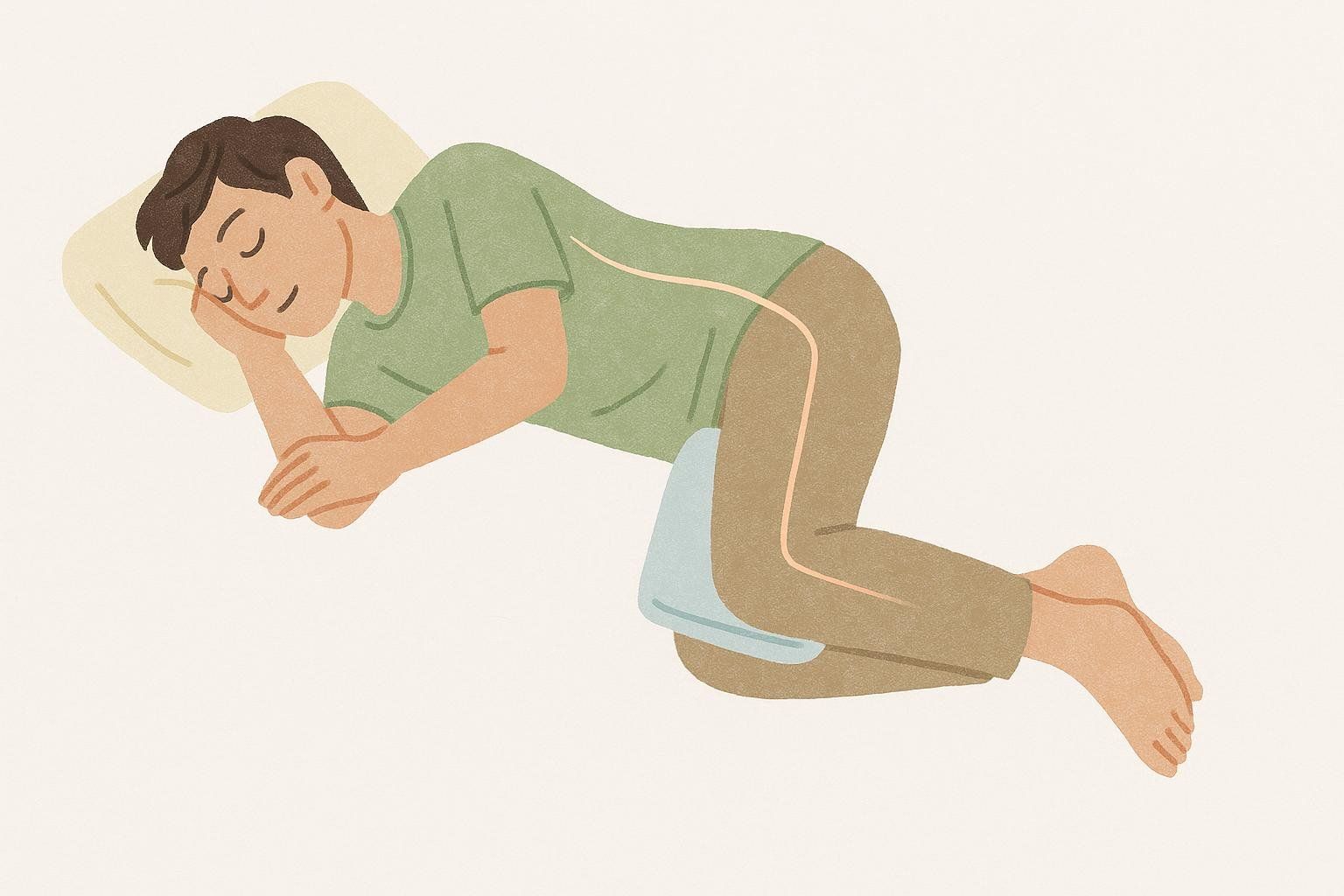
Sleeping on your side with knees slightly bent or on your back with a pillow under knees keeps the pelvis neutral. Avoid stomach sleeping if possible.
Will a standing desk alone fix it?
Helpful but not sufficient. You still need to strengthen weak links and stretch tight tissues.
Next Steps: Scan, Plan, Excel
Ready for objective proof your hard work is paying off? Book a scan at a BodySpec location near you—our affordable DEXA scans quantify lean mass in each leg and hip region, so you can watch glute growth replace dysfunctional tilt-driving imbalances.
Need more movement ideas?
- 10 Essential Exercises to Improve Posture and Relieve Pain
- Mobility Exercises: Drills for Office Workers, Runners, and Seniors
- How to Fix Muscle Imbalance: 4-Step Guide to Symmetry
Commit to 10 minutes a day, sprinkle in these lifestyle tweaks, and retest in a month—you might be surprised how quickly your hips (and back) thank you.
